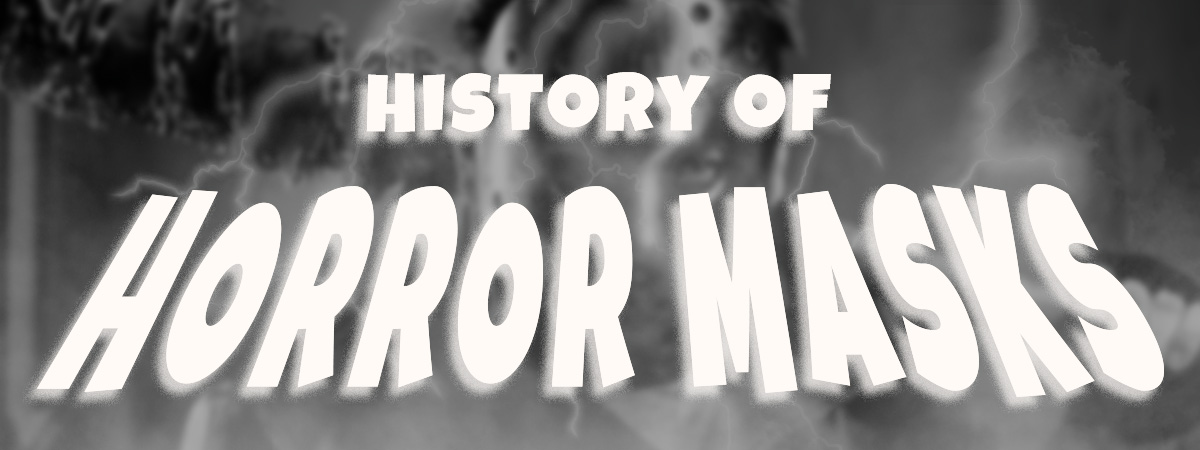Some horror movie cliches are cliches because they're so effective. We're talking dim lights, suspenseful music, point-of-view camera work, and, yes, masks! They're unsettling simply because they exploit our fear of the unknown. They force us to ask ourselves: what is behind the villain's mask? That question inspired us to write this piece showing the history of masks in horror films.
Of course, masks were staples of ritual and theater long before there were movies. Many or even most cultures wore masks at some point, from the Greeks to the Japanese. Masks may have been worn during the Gaelic festival of Samhain, which influenced many of our Halloween traditions—and from there, spread to horror films.
So join us as we look at masks used in horror movies, from early cinema into the twentieth century. While we can't mention every mask (especially as they became much more prevalent with the dawn of the slasher film genre), we'll definitely cover the highlights!
One last note: there are spoilers for many of the movies on this list, but don't let that stop you from seeing them!
The Phantom of the Opera (1925)
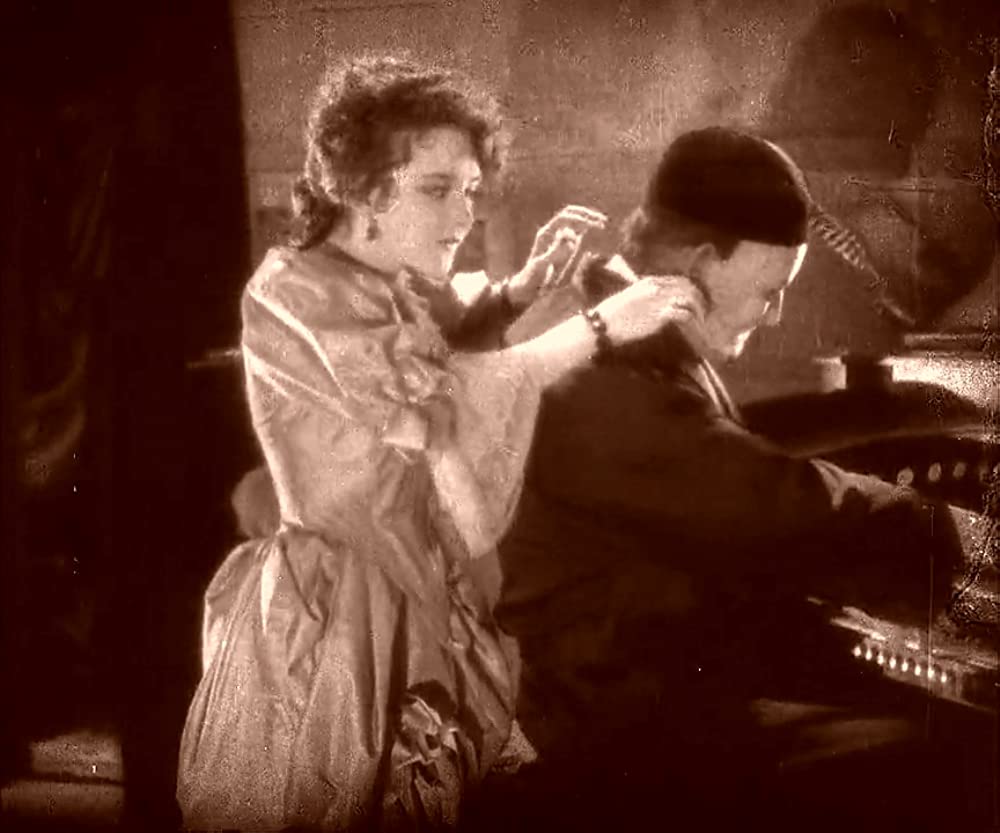
[Source: Jewel Productions/Universal Pictures/IMDb]
The Phantom of the Opera was one of the first major films with a masked villain. While not technically the first film—some earlier film serials had masked villains—it was one of the most iconic masks in the silent film era. The mask worn by the title character Erik had a dual purpose, to hide the disfigured portion of his face but also to conceal his identity. Masks are worn in horror movies for a multitude of reasons, but many characters would follow in the Phantom's footsteps.
Doctor X (1932)
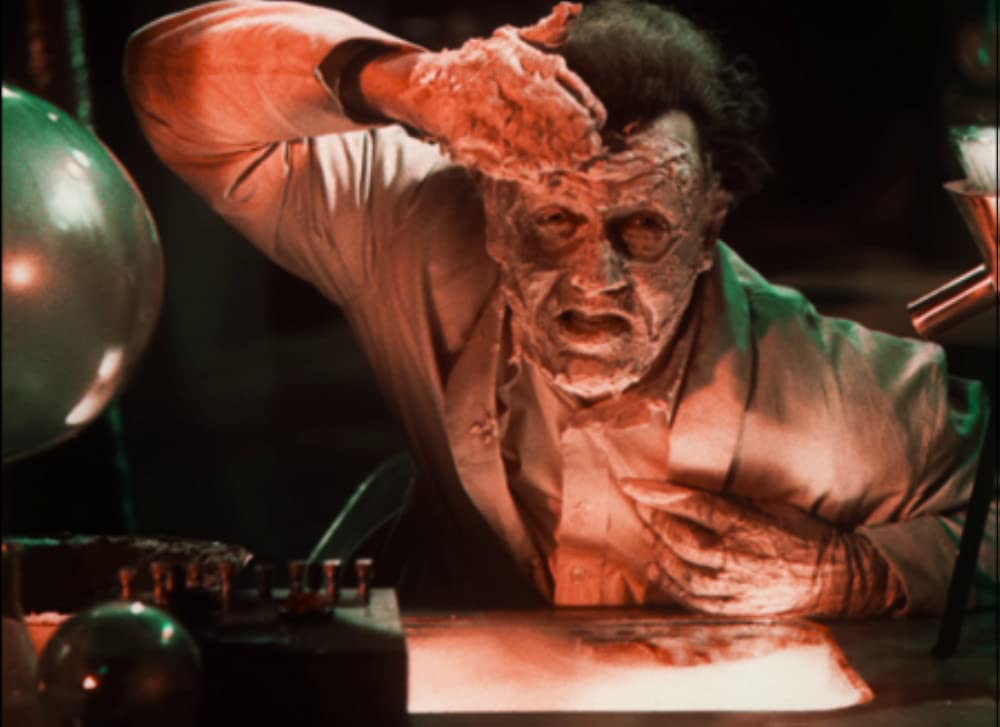
[Source: First National Pictures/IMDb]
Who would expect to see one of horror's most terrifying masks in the 1930s? Doctor X features an utterly horrifying type of mask that has yet to make a comeback. This pre-code horror movie got away with quite a bit, including a scary "flesh mask" made by the antagonist. By slapping synthetic flesh paste on, he became the bone-chilling Moon Killer. Believe it or not, this film spawned a "sequel" of sorts. Sadly, it hardly feels related, and the flesh mask did not return.
The Invisible Man (1933)
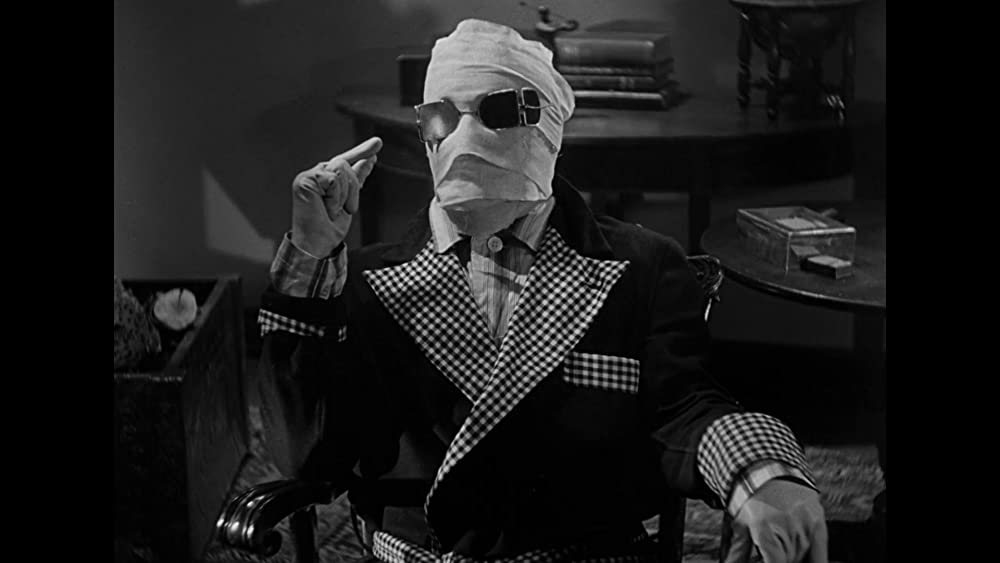
[Source: Universal Pictures Corp./IMDb]
Based on a book by H.G. Wells, The Invisible Man is another iconic horror movie made by Universal Pictures. The oddly bandaged man reveals himself to be invisible after the locals get too nosey, and events unravel from there. His mask is unique among masks in horror. Rather than obscuring a face, it's actually giving Dr. Jack Griffin the illusion of having a face. There were several sequels to The Invisible Man, along with a reboot in 2020, but it's hard to capture the surprise of the original!
Mad Love (1935)
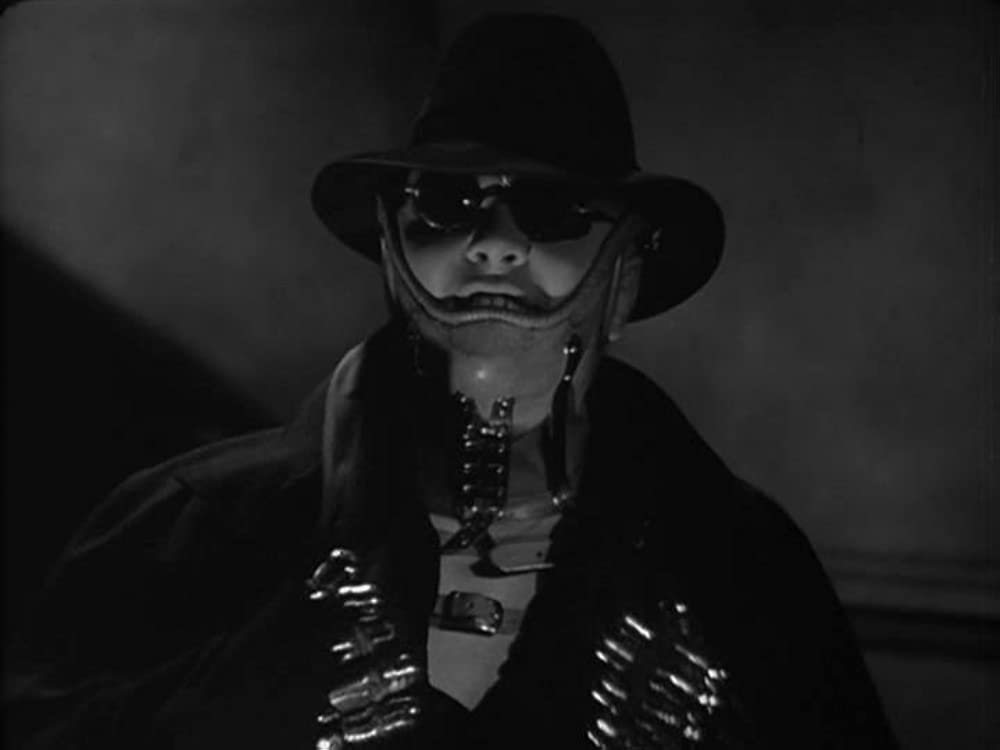
[Source: Metro-Goldwyn-Mayer/IMDb]
One of Peter Lorre's earliest American films was Mad Love, where he plays the mad doctor, Dr. Gogol. (Peter Lorre became famous for his role in M, and his part in Arsenic and Old Lace is iconic!) At one point in the movie, Dr. Gogol disguises himself as Rollo, a murderer who had been decapitated. He wears a bizarre mask that covers his chin and the sides of his face. Paired with creepy round goggles and a brimmed hat, he has quite the spooky silhouette. His chin mask, just like the Phantom of the Opera mask, gets the job done in a horrifying fashion with minimal coverage. You don't need a full face mask to be scary!
The Face Behind the Mask (1941)
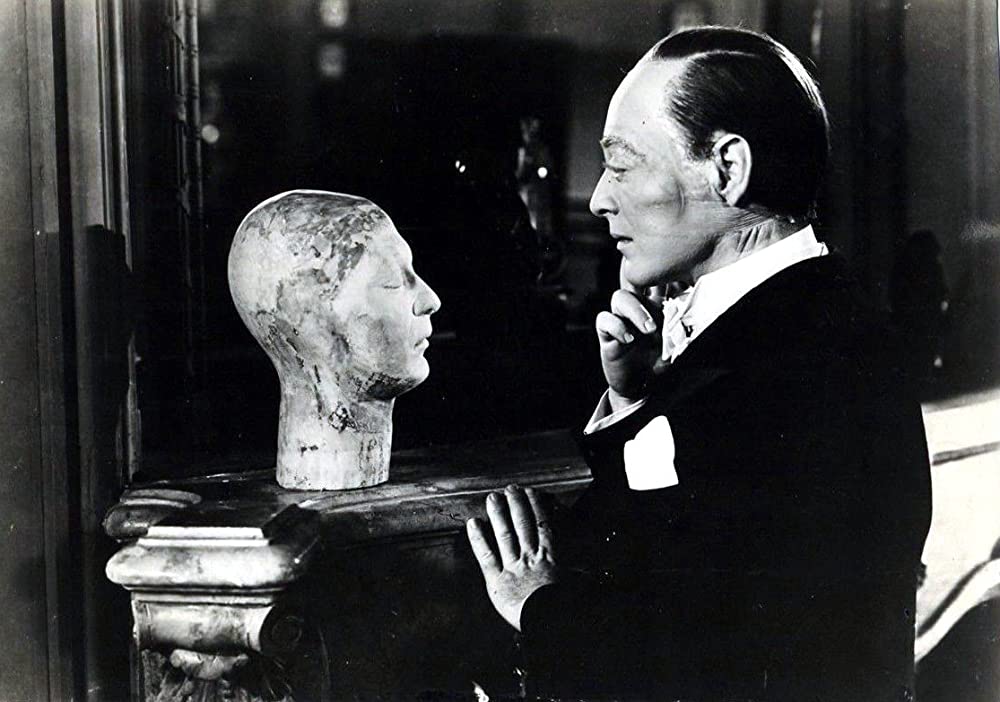
[Source: Columbia Pictures/IMDb]
We certainly haven't had enough of Peter Lorre yet! In The Face Behind the Mask, Lorre's character, Janos, has his face horribly scarred by fire. The Face is more of a crime noir film movie than strict horror, although you watch as Lorre peels an incredibly lifelike rendition of his face off a mannequin head. While the mask isn't filmed being put on, the mask is implied as being worn. A few other movies after this one also had largely implied, lifelike masks using actors' faces, such as Happy Birthday to Me from 1981 and House of Wax—which is next on our list!
House of Wax (1953)
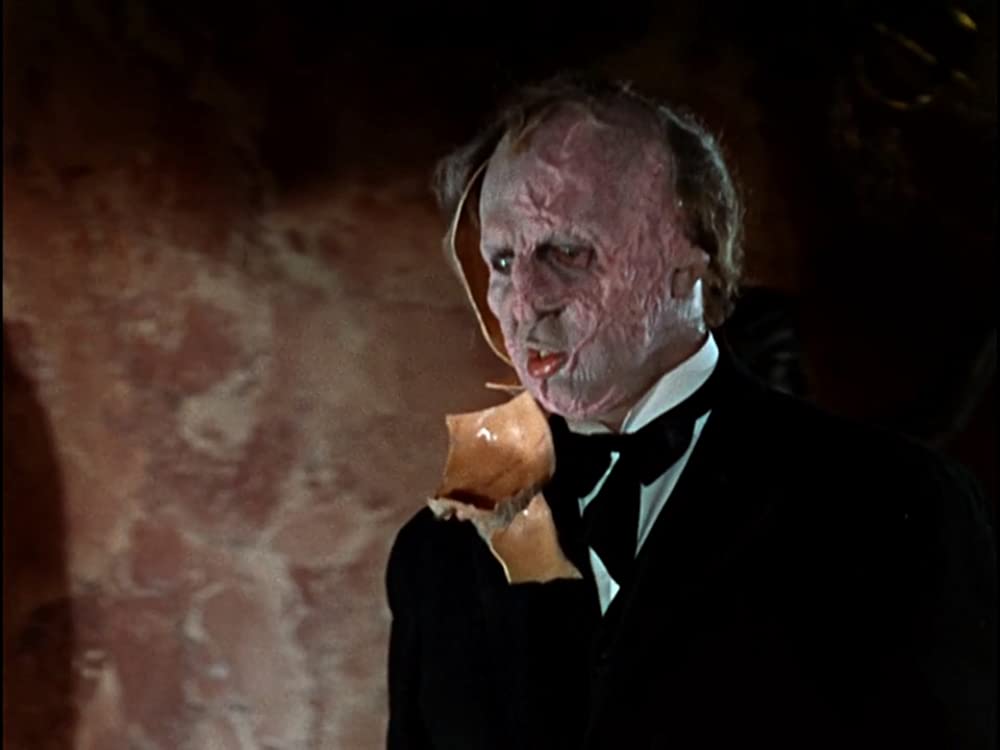
[Source: Warner Bros. Pictures/IMDb]
House of Wax is a remake of 1933's Mystery of the Wax Museum, though it has become the more iconic rendition. The film also helped revitalize Vincent Price's career, vaulting him into horror movie fame. Vincent's character runs a wax museum and sculpts incredibly lifelike wax figures. However, he's actually killing people and covering them in wax, turning bodies into museum exhibits. Eventually, we discover that his own face is a mask made from wax to hide his deformities. Vincent Price acted throughout most of the movie with his own face until it was time for the big reveal.
Eyes Without a Face (1960)
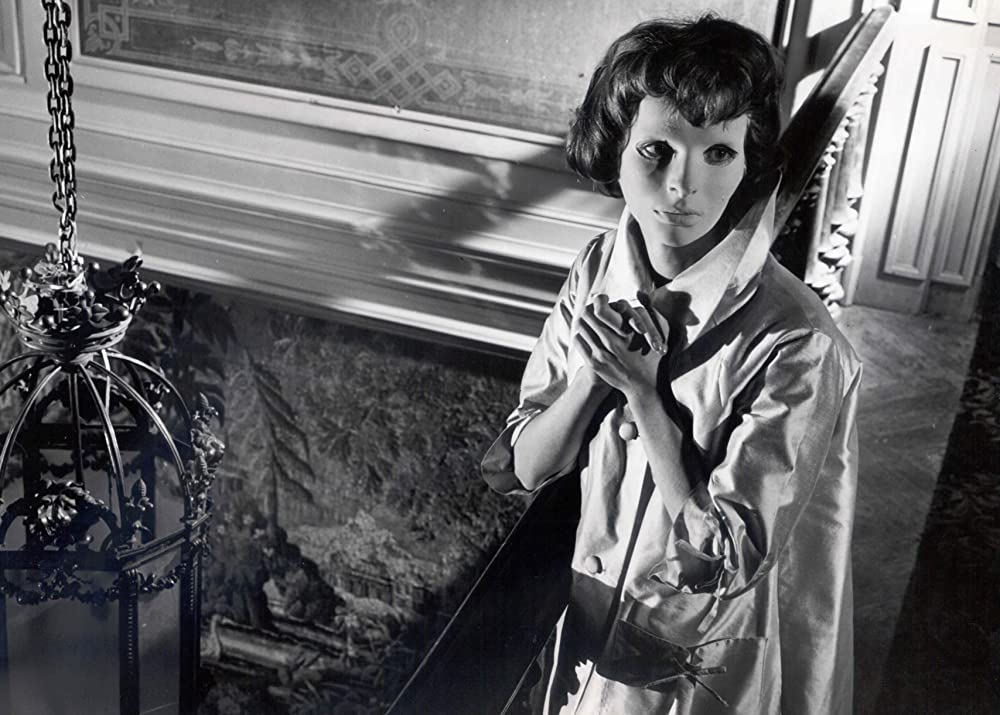
[Source: Champs-Élysées Productions/Lux Film/IMDb]
While many of the movies on our list of horror masks come from Hollywood, there are a few international horror movies of note! One such film is Eyes Without a Mask, a French horror movie. Christiane, our masked woman, is not the villain in this movie, but her blank face mask is so unnerving that it deserves a mention. While Eyes Without a Mask was not understood in its time, it has since become an influence in the genre. Even John Carpenter was inspired by this movie to seek a featureless mask for Michael Meyers in Halloween!
Blood and Black Lace (1964)
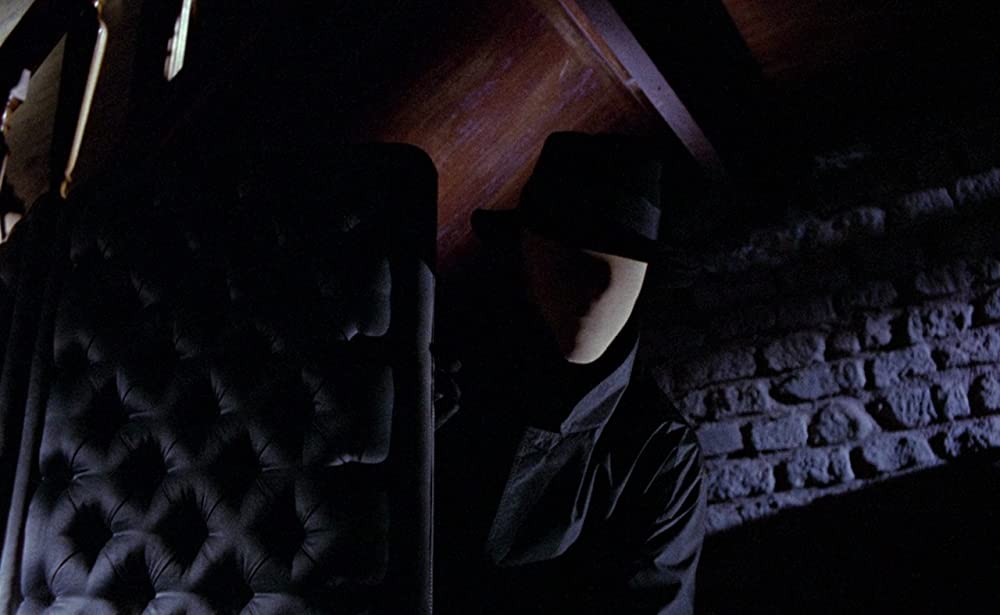
[Source: Emmepi Cinematographica/Les Productions Georges de Beauregard/Monachia Film/IMDb]
Giallo (or Italian genre cinema) includes some great horror movies! While not an immediate commercial success, Blood and Black Lace had a belated impact on the thriller genre with its mixture of crime and horror. As part of the big twist, the faceless antagonist turns out to be a combination of two people wearing the same mask, Massimo Morlacchi and Contessa Christina Cuomo. Villains sharing a mask is rare, especially at this time in horror cinema. It wasn't until the Scream franchise that multiple masked villains would become more common.
Onibaba (1964)
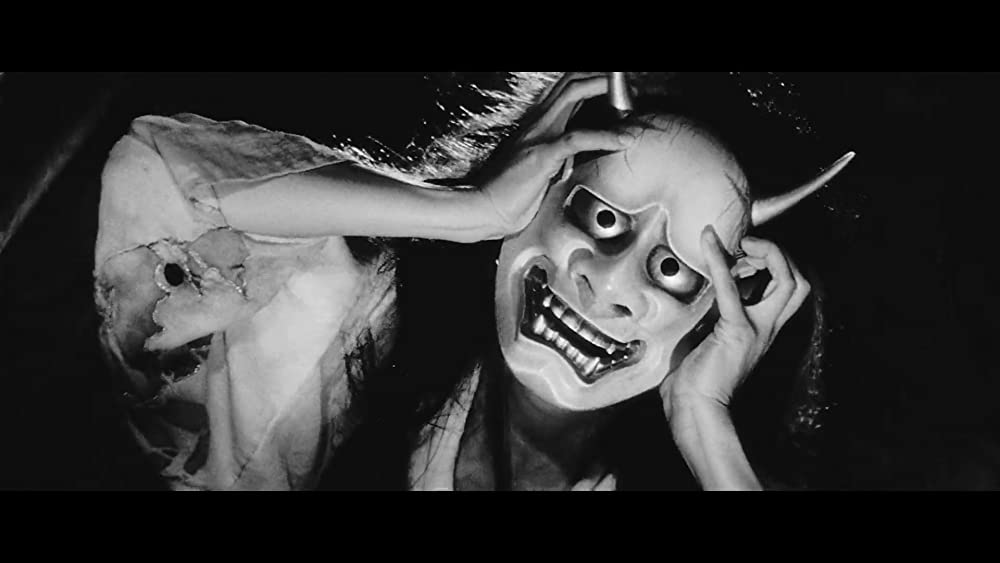
[Source: Kindai Eiga Kyokai/Tokyo Eiga/IMDb]
Masks are culturally significant in traditional Japanese theater, so there's no surprise that Japanese masks leaped onto the silver screen. The mask in Onibaba is an example of a hannya mask from Japanese Noh theater. Interestingly enough, Noh originated in the 14th century, which is the same time period for Onibaba! In Noh theater, the hannya mask depicts a female demon, particularly the spirits of women who were turned into demons through jealousy or obsession. The masks also have different meanings depending on the color. White masks indicate that the woman had been a woman of high status, such as an aristocrat, while a red mask represented a woman of lower stature, such as a villager. There's also a dark red mask to indicate a true demon. In the movie, a stolen mask attaches itself to a jealous woman's face, disfiguring her.
The Texas Chainsaw Massacre (1974)
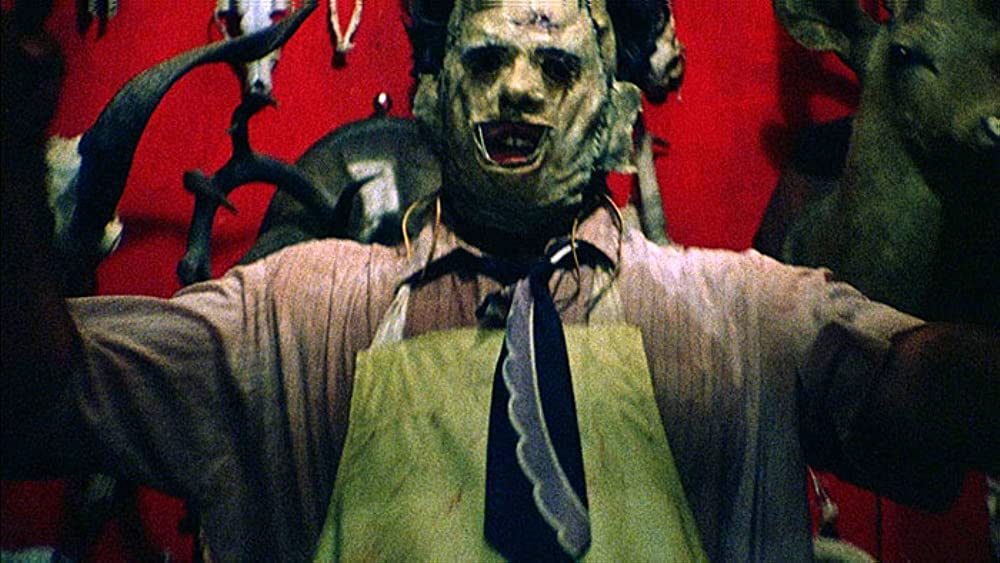
[Source: Raven Pictures International/Vortex/IMDb]
With a title like The Texas Chainsaw Massacre, "trailblazer" isn't necessarily the first word that comes to mind. (Unless, of course, you're a horror movie buff!) It was one of the first slasher films and established (or popularized) plenty of tropes. They include a masked killer, power tools as weapons, and the final girl. Throughout the franchise, Leatherface wears several different masks, including the killing mask, the pretty woman mask, and the old lady mask. The creators say that the masks indicate Leatherface's personality at the time he's wearing them because the character has difficulty expressing himself.
Phantom of the Paradise (1974)
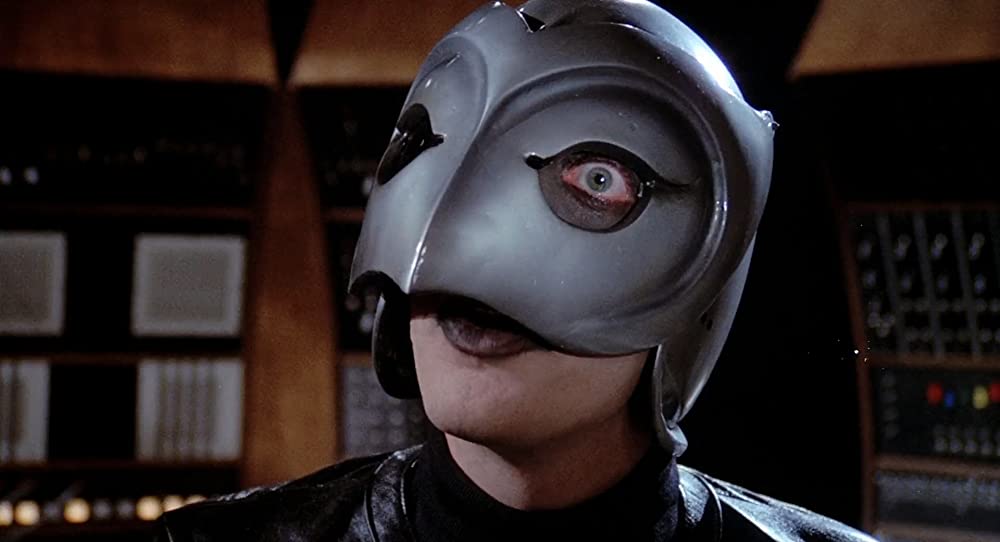
[Source: Harbor Productions/IMDb]
Phantom of the Paradise is a comedy horror rock musical that took cues from earlier films, including Phantom of the Opera. Winslow is a man trying to get ahead in the music industry, until the right side of his face is disfigured and his vocal cords are destroyed. He dons a silver owl mask and seeks vengeance on the people who wronged him, including record producer Swan. Interestingly, neither Winslow nor Swan are entirely innocent in the film—in fact, Swan was inspired by the notorious producer (and later, convicted murderer) Phil Spector.
The Wicker Man (1975)
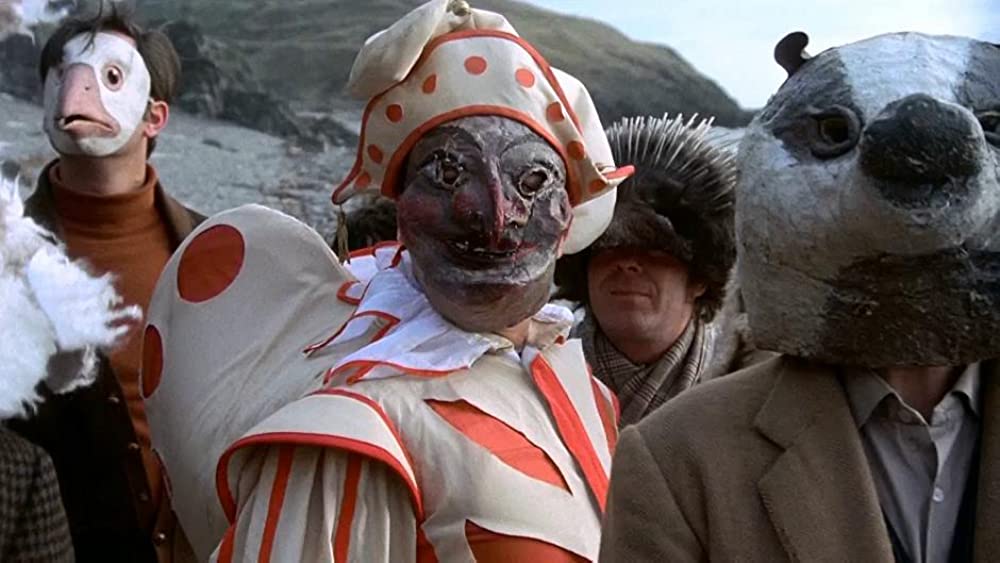
[Source: British Lion Films/IMDb]
One mask is unnerving enough, but what about an entire village wearing them? The pagan residents of Summerisle wear creepy animal masks as part of their religious rituals. (Honestly, it's a nice break from concealing deformities or hiding one's identity.) One could also argue that their identities don't even matter, as the entire town is responsible for the mayhem to follow.
Alice, Sweet Alice (1976)
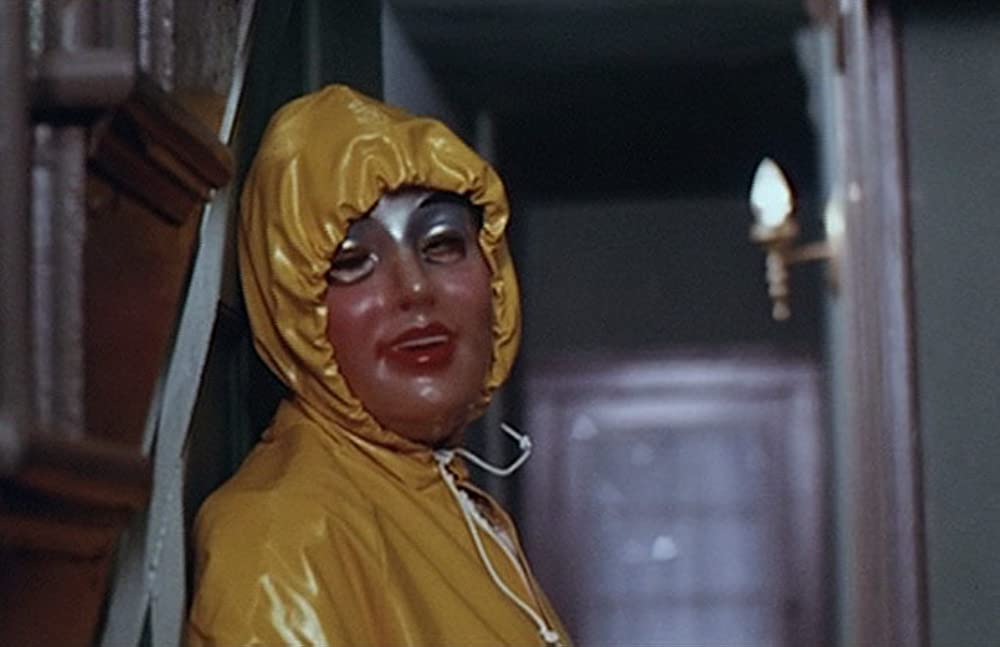
[Source: Harristown Funding, Ltd./IMDb]
Halloween costumes were first commercially available in the 1930s, so it was only a matter of time before we had a slasher with an off-the-rack Halloween mask. The mask has lipstick and makeup but is otherwise partially transparent. In fact, it's just opaque enough to hide the killer's identity—which keeps the audience guessing until the killer is revealed!
The Town That Dreaded Sundown (1976)
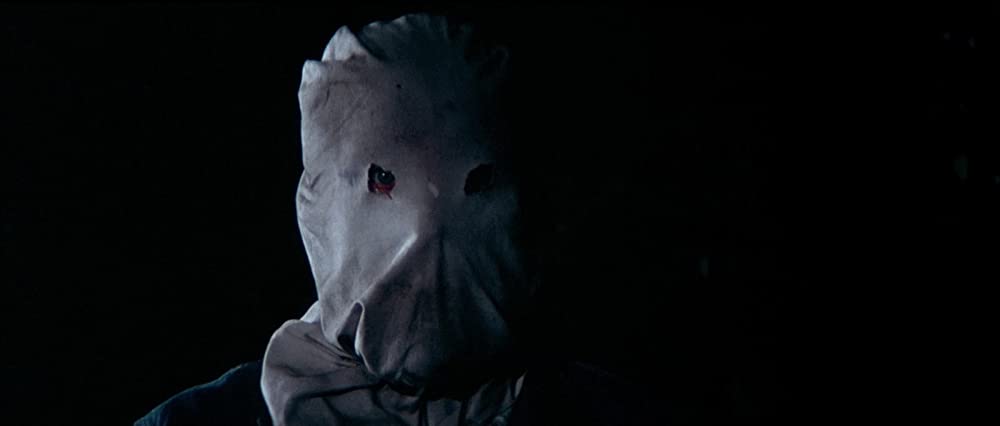
[Source: Charles B. Pierce Film Productions, Inc./IMDb]
While some movies look to earlier films, novels, or even video games for inspiration, others draw from real life. The Town That Dreaded Sundown is one such film, loosely based on the Texarkana Moonlight Murders. Victims described the killer as tall, wearing a white mask with holes cut out for the eyes and mouth. You can clearly see the inspiration for the movie's villain taken from these events. Unfortunately, the real case has yet to be solved, and the movie leads to the same unsatisfying ending.
Halloween (1978)
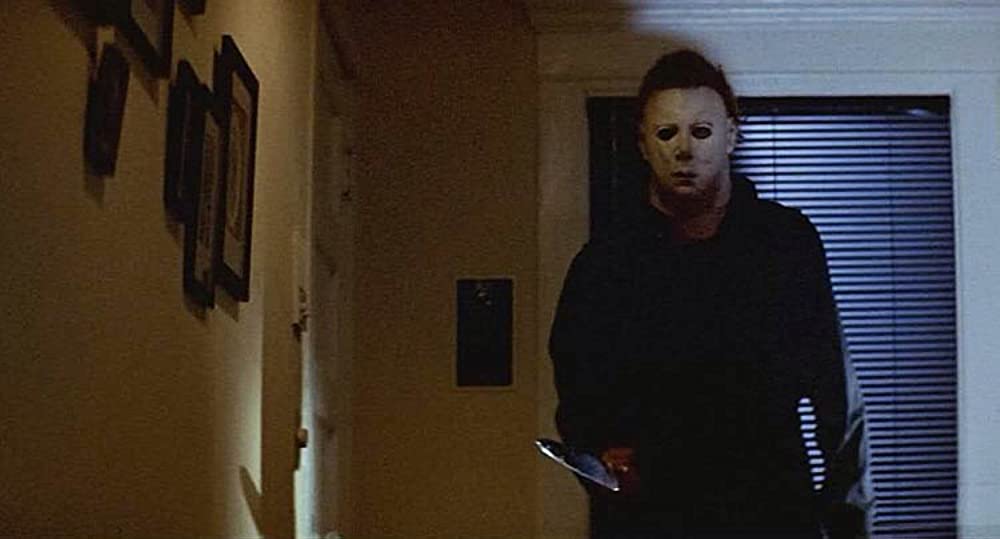
[Source: Compass International Pictures/Falcon International Productions/IMDb]
One of the most iconic masks in slasher film history, the origins of the mask itself are quite interesting! As we mentioned earlier, John Carpenter took some inspiration from Eyes Without a Face when looking at the overall feel of his villain's mask. After trying out several mask ideas provided by Tommy Lee Wallace, they settled on a James T. Kirk mask from Star Trek. The mask's sideburns and eyebrows were removed, and it was painted a flat white. They also teased the hair and cut out a different eye shape to complete this iconic horror movie mask. This mask was used again in Halloween II, and they allowed the actor to take the costume home, thinking it would be their final movie. They have been chasing the look and feel of the original mask in the Halloween franchise ever since!
Tourist Trap (1979)
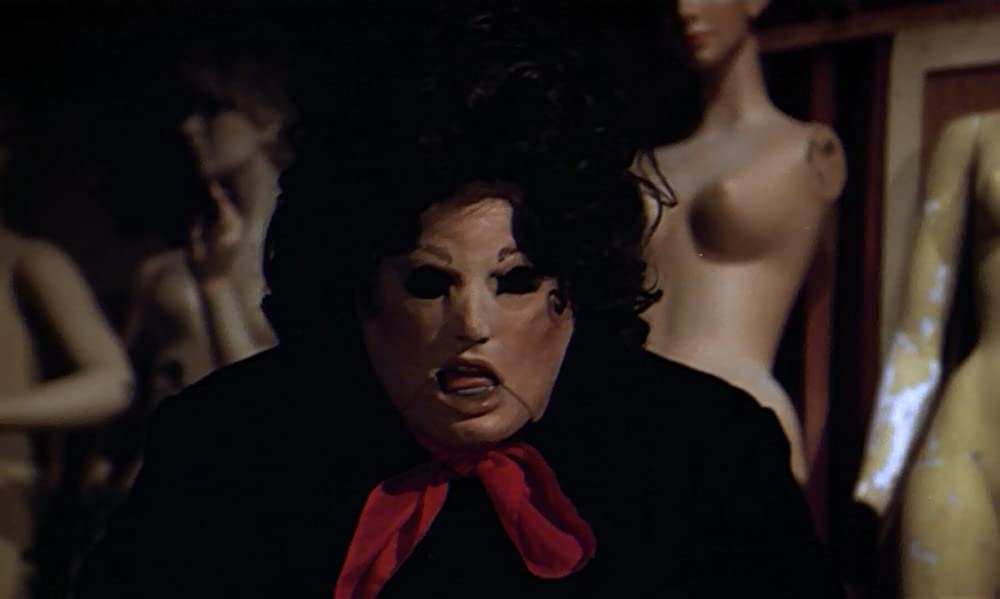
[Source: Charles Band Productions/IMDb]
Much like Leatherface, the villain in Tourist Trap is a man of many masks. The masks' creator, David Ayres, recalled that he made at least six of them for the film! Tourist Trap is one of the few horror movies to receive a PG rating, as PG-13 wouldn't get introduced until 1984. While the film didn't stand out from its peers at release, Tourist Trap was praised by Stephen King and is worth a watch for its marvelous masks.
My Bloody Valentine (1981)
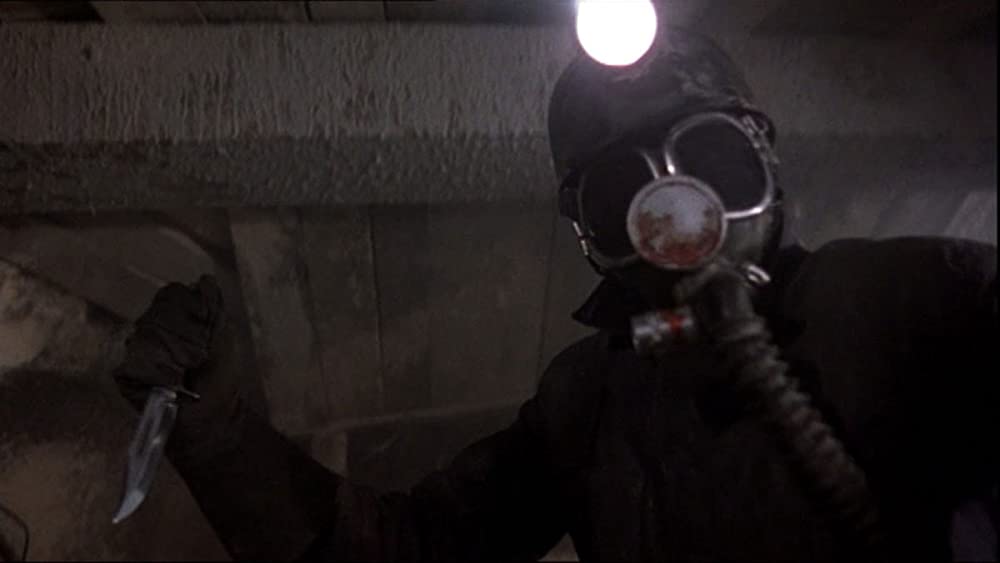
[Source: Canadian Film Development Corporation/Secret Film Company/IMDb]
While helpful in certain professions, some masks are just plain creepy! This Canadian film is set in a mining town during Valentine's Day, a decidedly un-horror-ish holiday. The villain wields a pickaxe and wears a gas mask, which are appropriate for the setting, at least. We bet that after watching My Bloody Valentine, you'll never look at a gas mask the same way.
Curtains (1983)
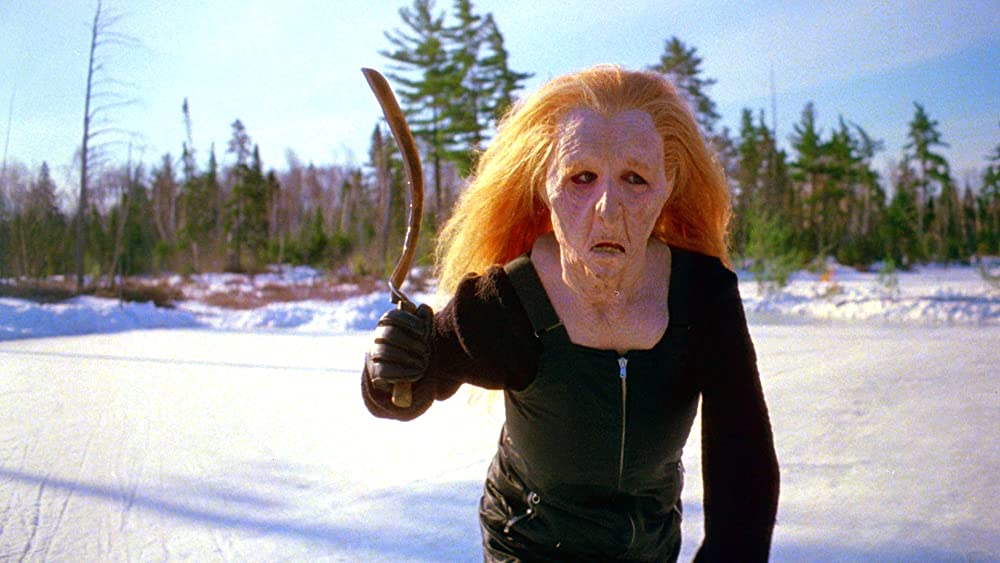
[Source: Simcom Limited/IMDb]
Yet another Canadian slasher film, Curtains stands out with a mask that is downright horrifying. (Gotta make those top 10 lists for something!) While many horror movie villains "work" at night, the killer in this hag mask attacks in broad daylight! And it turns out, there are actually two women antagonists in this movie—a rarity in horror cinema. Yet another box office failure-turned cult classic, Curtains is a must-see for slasher fans.
Friday the 13th: The Final Chapter (1984)
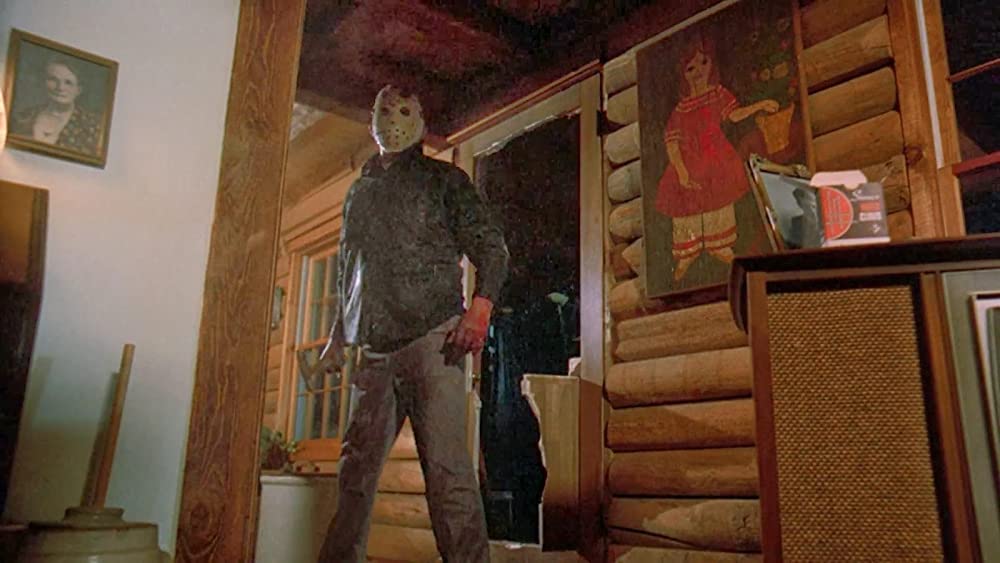
[Source: Paramount Pictures/IMDb]
No, we didn't forget about Jason. Why did we choose the 4th film in the franchise instead of the first? Friday the 13th fans already know this, but Pamela Voorhees was the killer in the first movie, and the hockey mask didn't make an appearance until the third film. In the second movie, when Jason Voorhees takes over as the main villain, he wears a sack over his head a-la The Town That Dreaded Sundown. The third film is so-so, and many fans agree that the franchise really finds its footing in Friday the 13th: the Final Chapter. This is the quintessential masked Jason.
Stage Fright (1987)
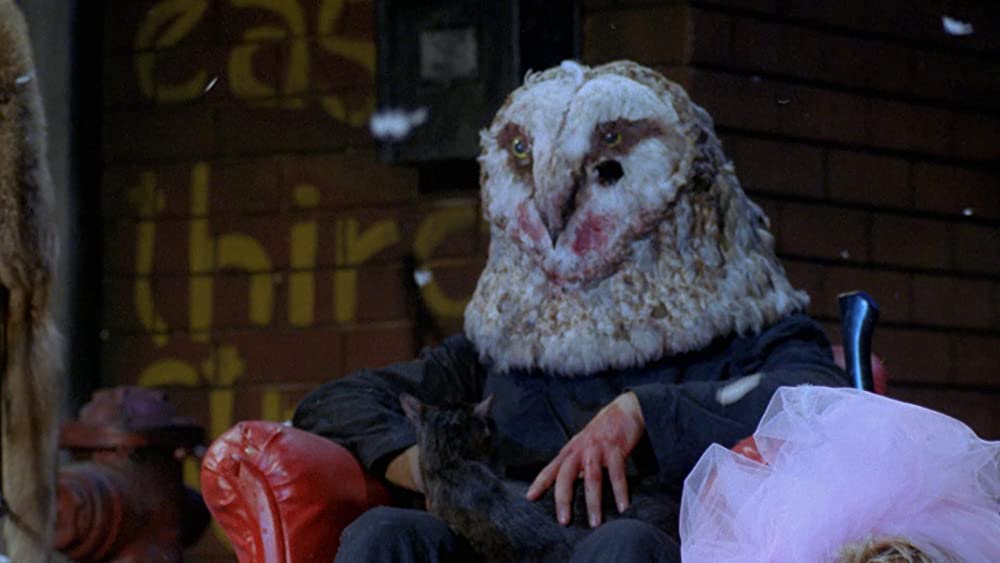
[Source: DMV Distribuzione Filmirage/IMDb]
It's the return of the Italian slashers with 1987's Stage Fright! While some may argue that this film is style over substance, the villain takes the cake when he terrorizes a theater with its own stage props. A struggling director and his actors attempt to put on a spectacle when they get locked in the theater with a murderer. After raiding the prop room, the villain settles on an oversize owl mask that is equal parts terrifying and iconic!
Nightbreed (1990)
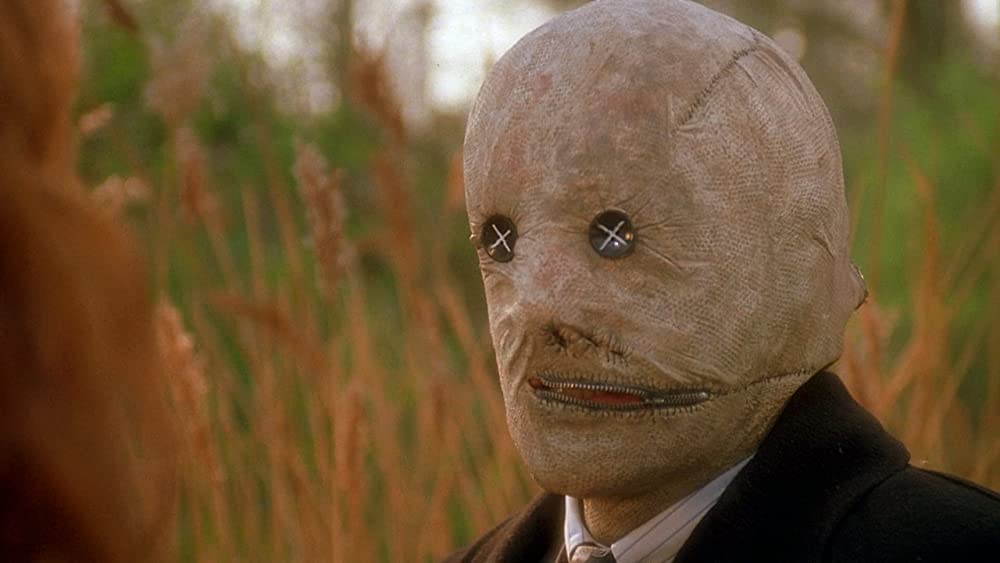
[Source: Morgan Creek Productions/IMDb]
How do you make a sack mask even scarier? Nightbreed added creepy button eyes, a zipper mouth, and some rough stitches. We have to agree that it's a terrifying upgrade—though we question how well Dr. Decker can see his victims. This film includes a strange alternate undead universe populated with weird, creepy monsters, so we're willing to suspend our disbelief. Even with its flaws, this mask is top 25 scary mask material!
The Silence of the Lambs (1991)
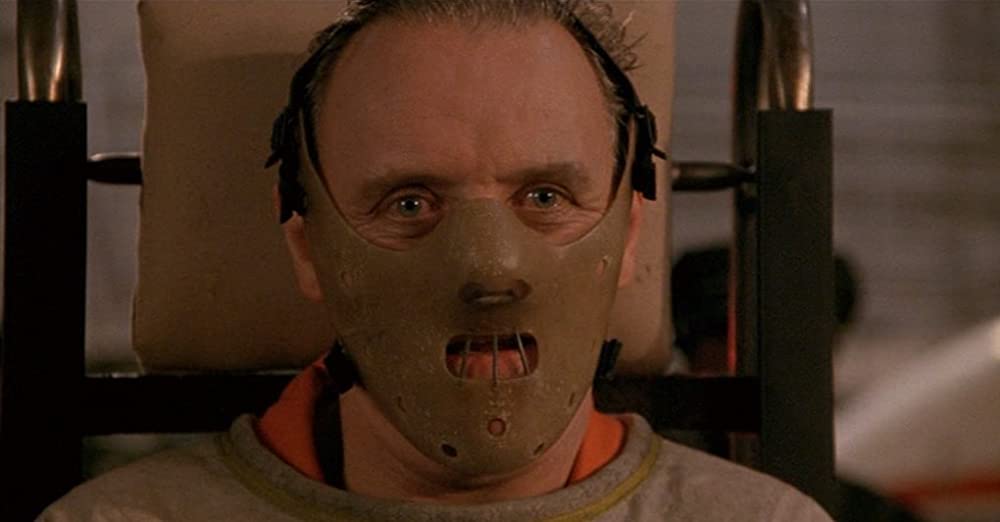
[Source: Strong Heart Productions/IMDb]
The mask in The Silence of the Lambs is a unique case because the villain, Hannibal, doesn't wear it intentionally. Instead, it's to protect the prison guards from him. During the film's production, a variety of masks were screen-tested before they settled on the iconic mask that Anthony Hopkins wears in the film. The costume designer intended on putting a finish on the fiberglass mask, but the raw sample was so good that they kept it unfinished. That certainly gives it a gritty feel that just works, doesn't it?
Scream (1996)

[Source: Woods Entertainment/IMDb]
The mask in the Scream franchise was another off-the-rack find. It was initially sold by Fun World in 1991-1992 as "The Peanut-Eyed Ghost". In Scream, the mask (and costume) was renamed "Ghostface"—and that stuck! The mask changed so many hands in the films, which was unusual for the time, making the audience wonder who was behind it!
Valentine (2001)

[Source: Village Roadshow Pictures/NPV Entertainment/IMDb]
The second Valentine's Day slasher film on this list, Valentine puts the villain in a creepy Cupid mask. What's interesting about the Cupid killer is that, while the mask provides anonymity, the killer himself gets nosebleeds. (We're introduced to this early in the film, when the future villain gets bullied at school.) The mask's nose bleeding throughout the film is truly unforgettable!
Saw (2004)

[Source: Twisted Pictures/IMDb]
Most people are familiar with Billy the Puppet in the Saw films, but pig masks have also appeared in every film of the main franchise. James Wan and Leigh Whannell decided early on that the killer should wear a rotten pig's head, but production initially gave them a rubber Halloween pig mask. The mask was made more gruesome by adding long strands of black hair and bloody pus that ran from the nostrils and eyes. The men and women who work the mask were called Pighead.
Behind the Mask: The Rise of Leslie Vernon (2006)

[Source: GlenEcho Entertainment/Code Entertainment/IMDb]
A mockumentary-style horror film, Behind the Mask: The Rise of Leslie Vernon's villain is different from most. The point of masked characters is often anonymity, but killer-to-be Leslie Vernon shares his plans openly with a documentary crew. The mask is another example of a blank white face, but made unsettling with an attached shock of hair.
Trick 'r Treat (2007)
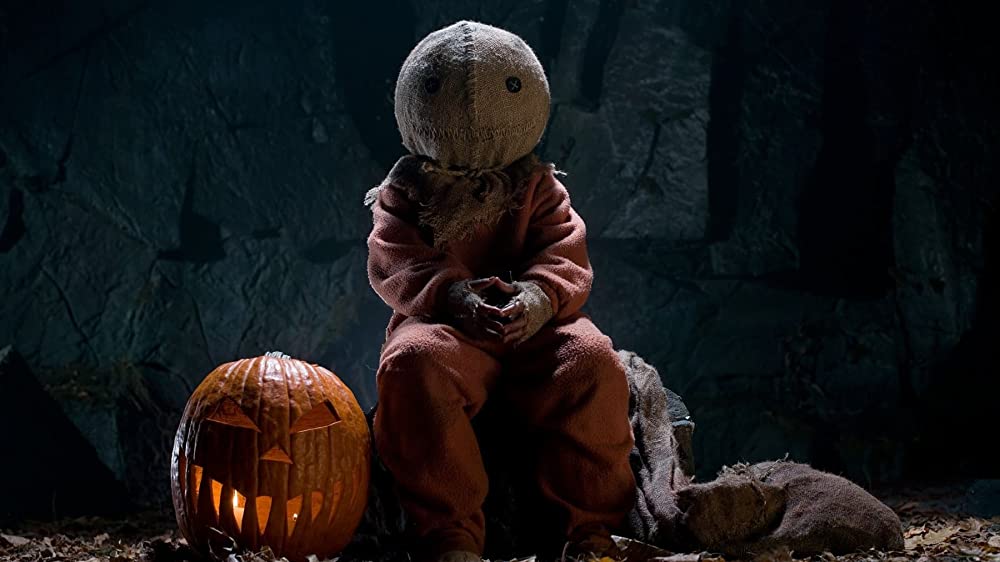
[Source: Warner Premiere/Legendary Pictures/Bad Hat Harry Productions/IMDb]
Trick 'r Treat had a rough start, due to delays and limited screenings, but it has since made a huge impression on the horror and Halloween movie community. We love everything about the film's atmosphere, and Sam is utterly terrifying in his burlap mask. As in Nightbreed, the filmmakers embellished a plain sack mask. Button eyes and large stitches are the main focal point, with a rope tied around the villain's neck. (We're pretty sure the real outfit wouldn't pass any costume safety inspections, but you can find appropriate renditions at many Halloween stores.)
The Strangers (2008)
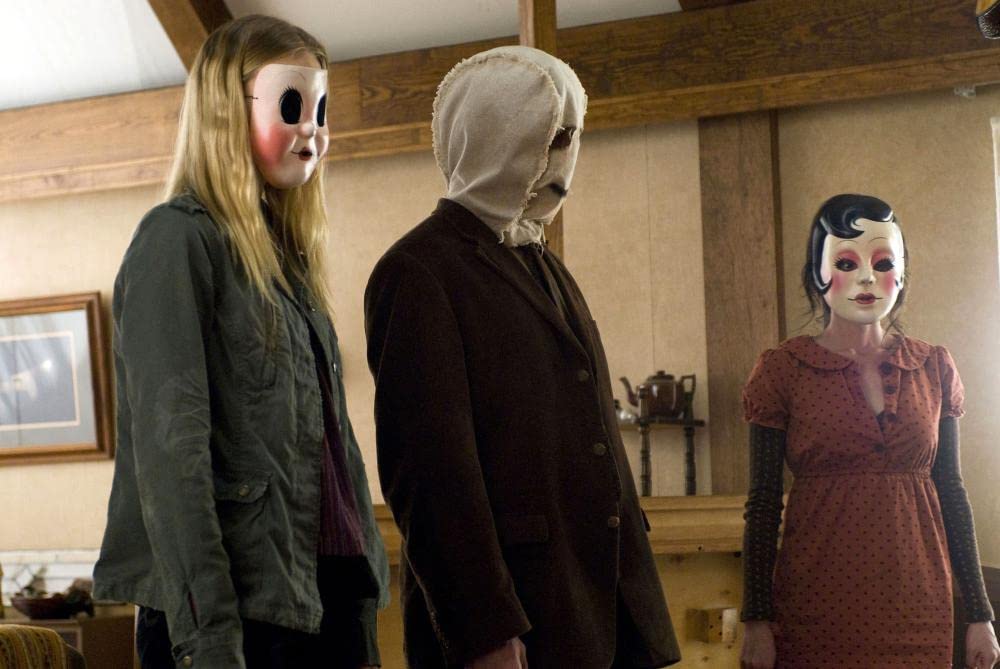
[Source: Rogue Pictures/Vertigo Entertainment/Mandate Pictures/Intrepid Pictures/IMDb]
While The Strangers doesn't stand out as a pinnacle of horror, it does feature masked individuals who are hard to forget. Two women wear vintage-looking Halloween masks, while a man wears a homemade sack mask with a creepy painted smile. (Apparently, he didn't get the memo about picking up a mask at the Halloween store—or he's just too cheap to buy one.) Either way, the masks and the movie's atmosphere help to deliver most of the scares in The Strangers.
You're Next (2011)
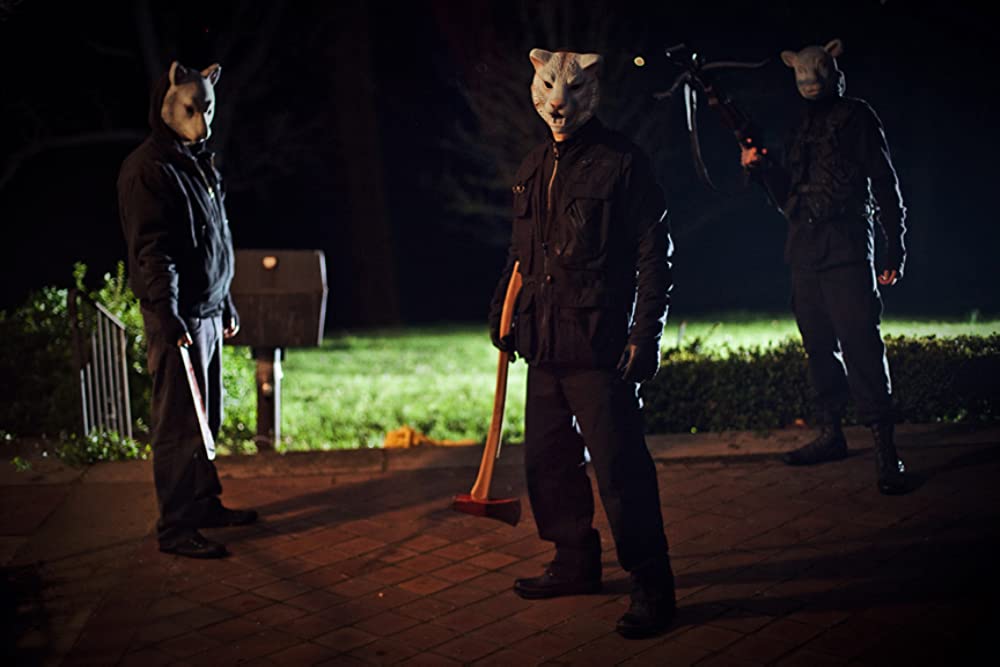
[Source: HanWay Films/Snoot Entertainment/IMDb]
We've already covered a few animal masks in this list, but You're Next is less about the masks and more about how it plays with slasher film tropes. Yes, the tiger, lamb, and fox masks are scary, but that's partly because they're worn by hired killers. We'll let you see how the story unfolds for yourself because this one is a must-watch!
Smiley (2012)

[Source: Level 10 Films/IMDb]
As horror has evolved, so have the villains' methods and motivations. Inspired by creepypasta and urban legends, Smiley involves chatroom users sending a message three times. This summons Smiley, who kills the recipient—and then the sender. One could say that it's a modern retelling of the Bloody Mary legend. While some see it as a modern Candyman copycat, the realistic skin mask is horrifically memorable.
The Purge (2013)
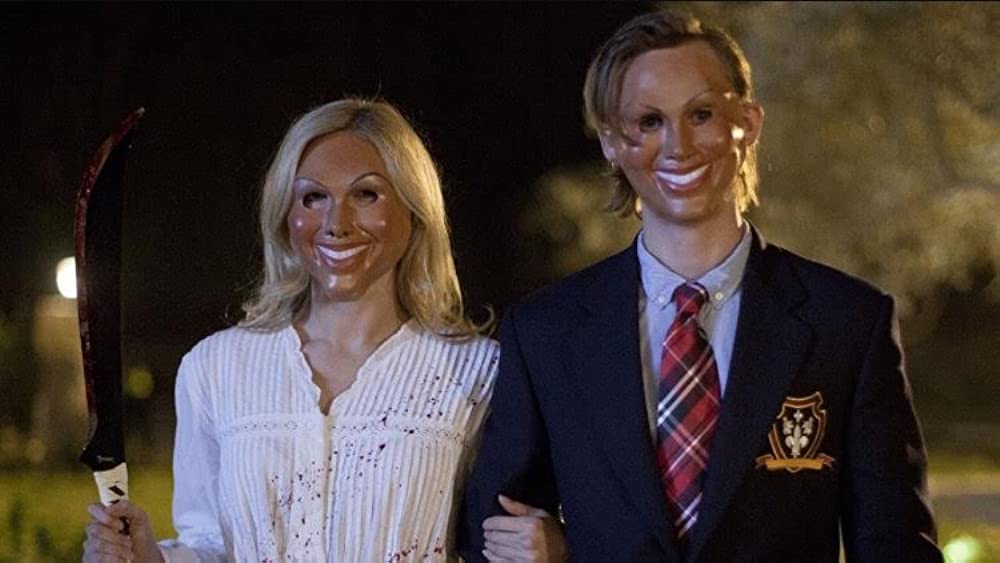
[Source: Blumhouse Productions/Platinum Dunes/Why Not Productions/Dentsu/Overlord Productions/IMDb]
The Purge puts masked villainy on a national stage. If you look at the original film, the TV series, and all of the sequels, The Purge boasts the largest collection of masks in a horror franchise—both seen and implied. (Honestly, we could write an entire article about the creepiest masks in The Purge!) While we only see some of the havoc happening on the annual Purge day, you can assume that there are many more masks involved. Some of our favorite masks from The Purge franchise include the Lady Liberty and Uncle Sam masks, the smiling masks in the first film, the face of God, and the Kiss Me mask. What's your favorite Purge mask?
Hush (2016)
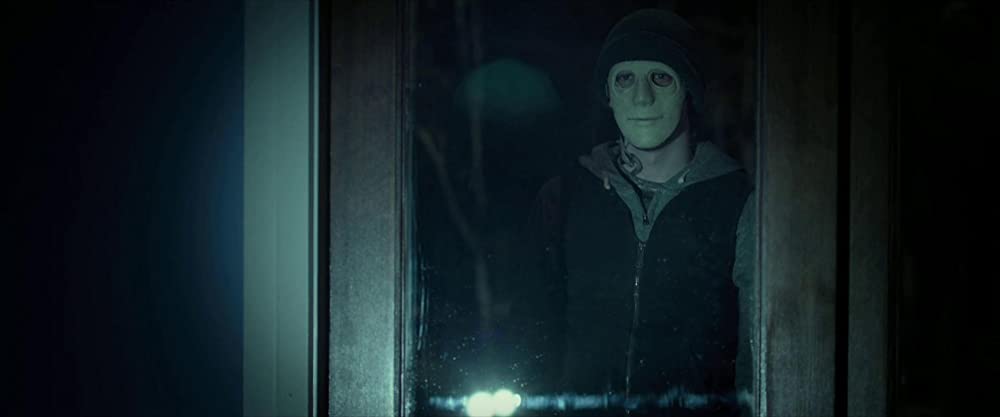
[Source: Blumhouse Productions/Intrepid Pictures/IMDb]
It was only a matter of time before streaming services developed their own masked horror villains. One of the better streaming slashers was Hush, a film about a horror writer who is unable to hear or speak. Interestingly enough, the (fictional) book she wrote was Midnight Mass—which became a Netflix series by the same director! The masked killer in Hush wears a variation on the blank white mask with a disarming smile and bags under its eyes.
Happy Death Day (2017)
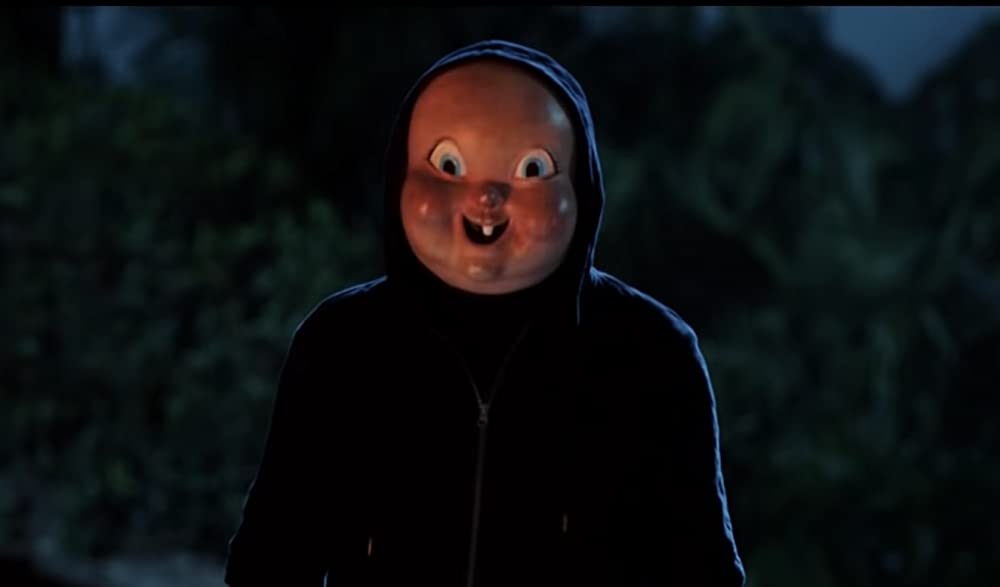
[Source: Blumhouse Productions/IMDb]
Masks of human faces are always a little creepy, but when they resemble the incredibly old or very young? That's nightmare fuel. A prime example of the latter, Happy Death Day's villain wears a giggling baby mask. In other circumstances, it might almost be okay. Maybe. But in this movie, it's terrifying. Happy Death Day was popular enough to generate a sequel, so if one movie with a baby mask isn't enough for you, you have the pleasure of watching another.
Us (2019)

[Source: Monkeypaw Productions/Perfect World Pictures/Blumhouse Productions/IMDb]
Jordan Peele absolutely knocked it out of the park with 2019's Us. The film features several masks, but our favorites are Jason's wolfman and his "tethered" doppelganger Pluto's cloth mask. Pluto, as the villain, wears the scarier mask, of course. The film inspired all sorts of fan theories, but we'll have to wait to see if Peele makes a sequel!
The Black Phone (2021)

[Source: Blumhouse Productions/Crooked Highway/IMDb]
Do you remember that demon mask in Onibaba? In The Black Phone, the villain wears an Oni mask from Japanese theater, also hailing back to the 14th century. It differs from most horror masks because it comes apart and can be worn with different expressions, or as just the top or bottom half. The villain wears his mask partially to hide his identity, but his actions suggest that she's also trying to hide from his own shame. It's an interesting departure from typical depictions of masked villains that otherwise seem cold and emotionless.
It's clear that masks will always have their place in horror movies. Do you have a favorite horror movie mask? How do you think their use in films might change in the future? If you're a fan of scary masks, you'll want to see all of the scary masks we have to offer at HalloweenCostumes.com!
